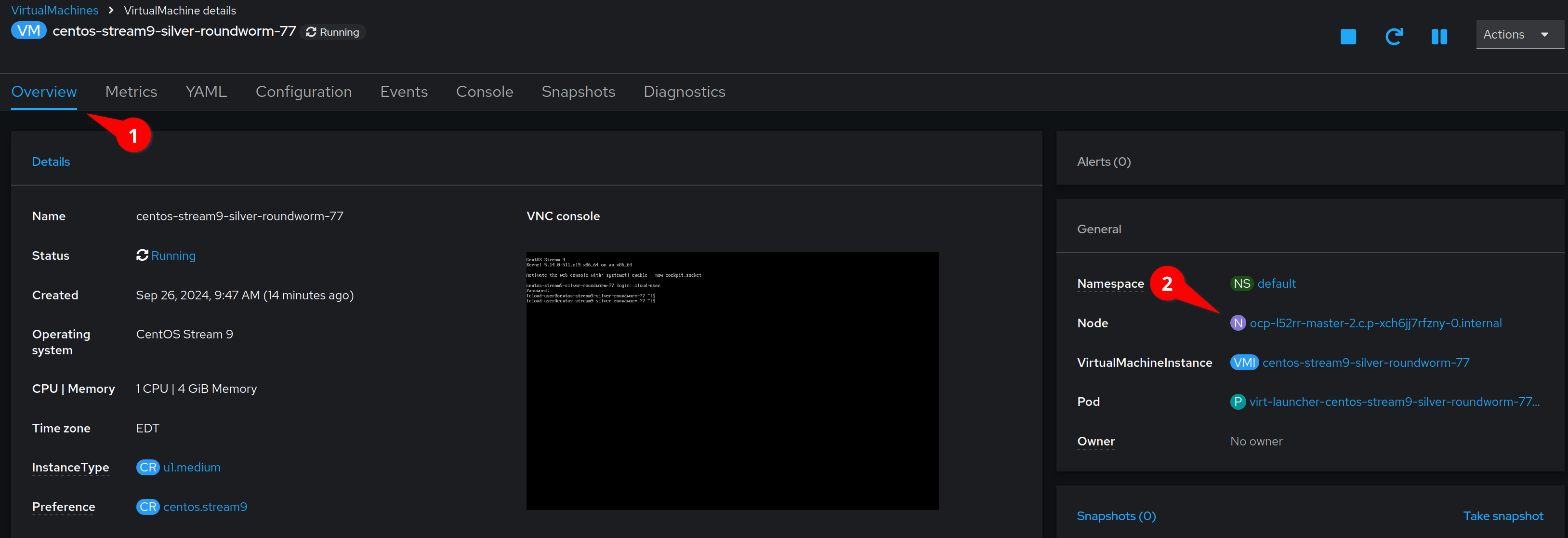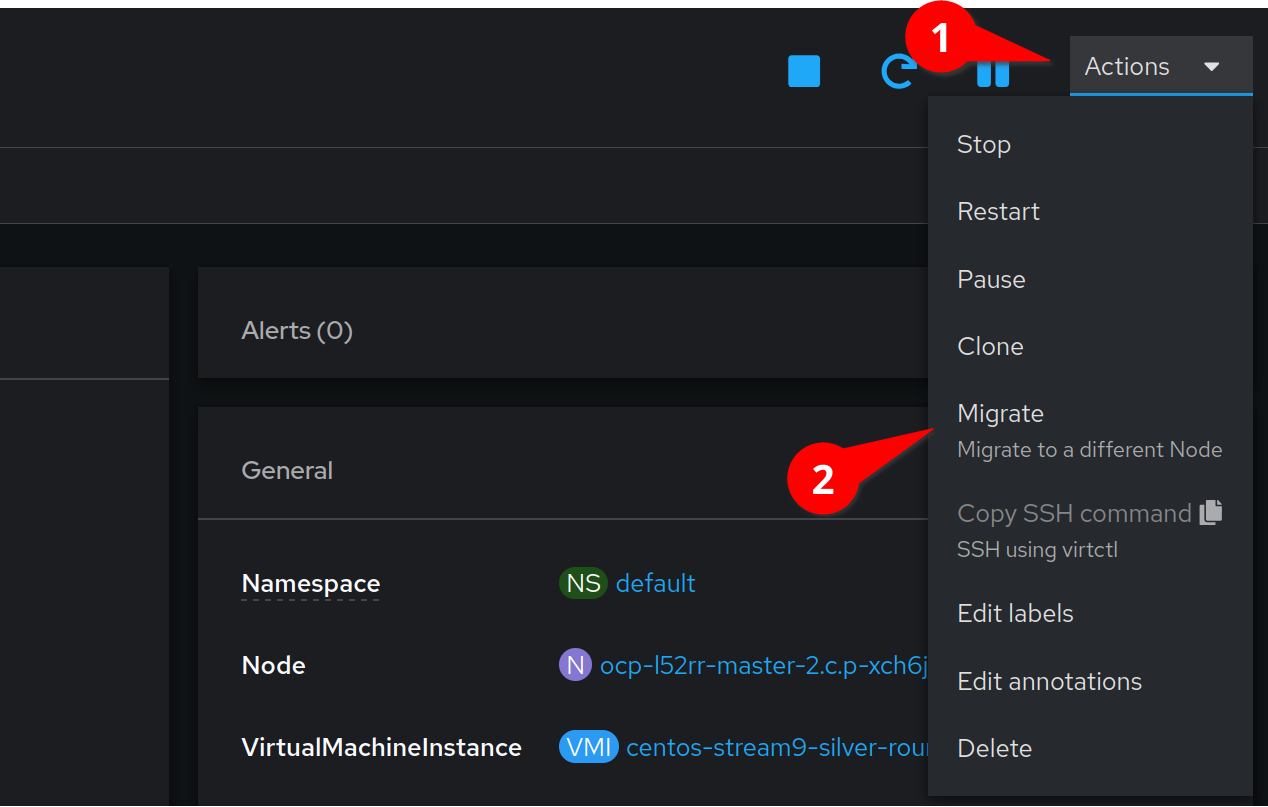Scenario - Persistent Storage Volume Provisioning and Availability for Virtual Machines
In this scenario, we will learn about how to provision a virtual machine on OpenShift Virtualization with Portworx.
Step 1 - Modify our VM
Let’s modify our VM to help prove that our changes are retained during a live migration and HA event.
Let’s write some data to a file:
virtctl ssh cloud-user@centos-stream9-example -i ~/.ssh/id_rsa -t "-o StrictHostKeyChecking=no" -c 'echo "Redhat was here" > ~/text'We can read our file at any time by running:
virtctl ssh cloud-user@centos-stream9-example -i ~/.ssh/id_rsa -t "-o StrictHostKeyChecking=no" -c 'cat ~/text'Step 2 - Test Live Migrations
In order for live migrations to be supported, OpenShift VirtualMachines need to use a PVC with a ReadWriteMany access mode. We can verify this by running:
oc get pvcTask 1: Live Migrate a VM
Back in the OpenShift Console, click on the Overview tab and take note
of the node that our VM is running on.

We can now migrate the VM to a new node by selecting the Actions menu,
and then clicking Migrate

After a few moments the interface will update with the new node.
It is important to understand that in OpenShift Virtualization VirtualMachines run inside pods. This migration spawned a new pod, on the destination node, and then live migrated the VM to that pod.
We can view the running pods by executing:
oc get pods -o wideNotice that one of our pods is in the Completed state, this is because
our virtual machine process is no longer in that pod!
We can view the running VMs by typing:
oc get vmsLet’s check to make sure our data is still there:
virtctl ssh cloud-user@centos-stream9-example -i ~/.ssh/id_rsa -t "-o StrictHostKeyChecking=no" -c 'cat ~/text'Step 3 - Providing HA
Task 1: Proving HA
We will now induce a failure in our OpenShift cluster.
It is important to understand that in OpenShift Virtualization, VirtualMachines run inside pods. As we learned above, our virtual machine is actually running from inside a pod. Let’s find out which node our virtual machine is running on:
NODENAME=$(oc get pods -o wide | grep 'Running' | awk '{print $7}' | head -n 1)
echo "Your VM is running on node: ${NODENAME}"Let’s cause a reboot of this node. We will now debug the node:
oc debug node/$NODENAMERunning
oc debug node/$NODENAMEcan take a few seconds as a pod needs to be attached to the node.
Chroot to the host
chroot /hostAnd finally, reboot the OpenShift worker node hosting the running MongoDB pod:
sudo rebootLet’s watch our VM and pod status in the default namespace:
watch oc get pods,vms -o wideTake note of the NODE column. We will see a new launcher pod start on a new node.
We can verify that our virtual machine is again running in the OpenShift Console, but because this was an unplanned outage, the VM has rebooted.
Let’s check to make sure our data is still there:
virtctl ssh cloud-user@centos-stream9-example -i ~/.ssh/id_rsa -t "-o StrictHostKeyChecking=no" -c 'cat ~/text'You are ready to move to the next challenge.